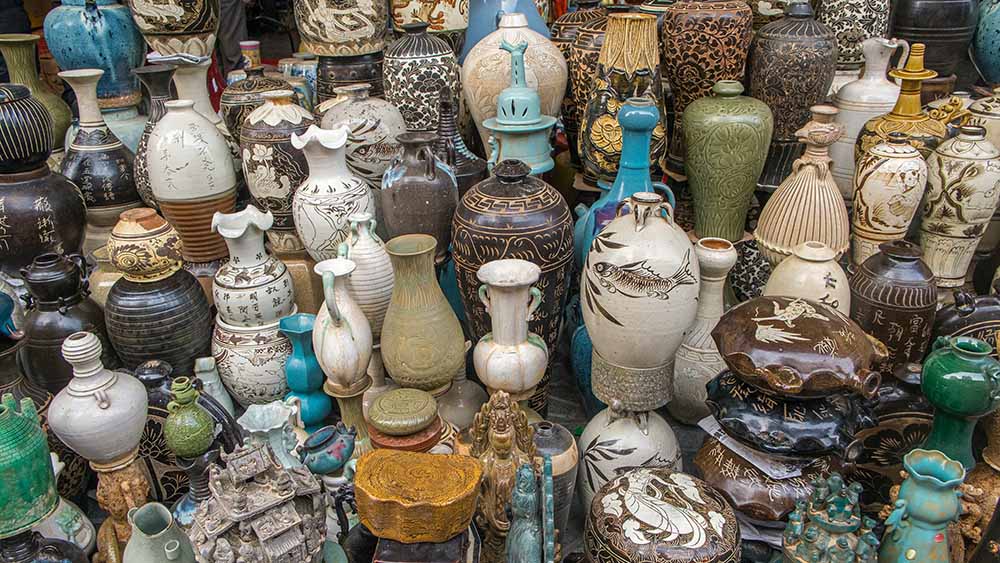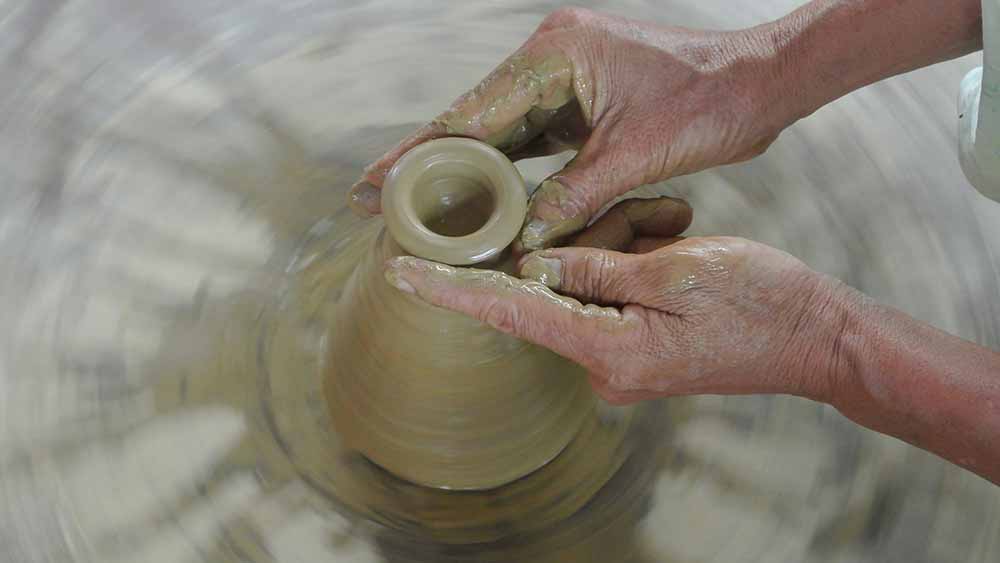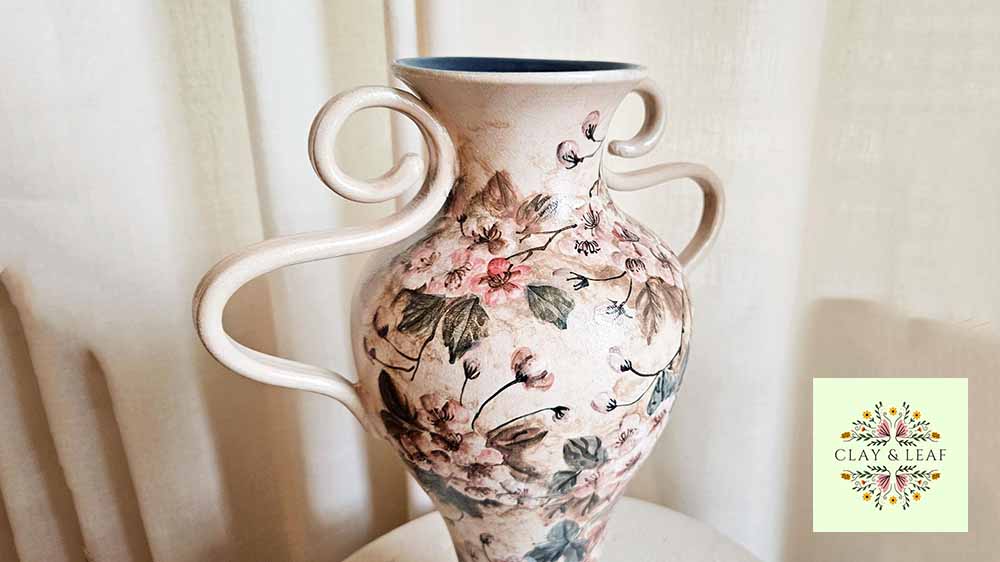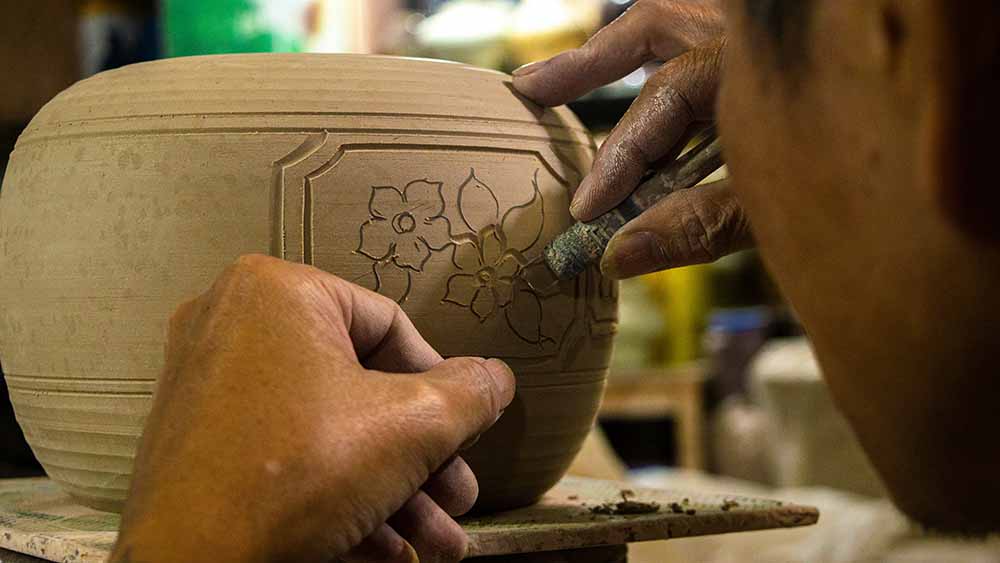Your cart is currently empty!

What’s The Difference Between Vietnamese & Chinese Ceramics?
Asian ceramics have been a fascination for collectors, historians, and art lovers for centuries. Among them, Chinese and Vietnamese ceramics are the most historic, beautiful, and culturally important. While they share some similarities, they are also very different. This article by Southeast Asian art expert Rita Luu will look at the differences between Vietnamese and Chinese ceramics and their history.
Historical Background
Chinese ceramics have a history of thousands of years with some of the earliest examples dating back to the Neolithic period. The tradition went through many dynasties, each with its unique style and innovations. Chinese porcelain was so popular worldwide that it influenced ceramic production in many other countries, including Vietnam.
Vietnamese ceramics, although ancient, arrived much later. Most experts agree that the golden age of Vietnamese ceramic production was between the 11th to 15th centuries, during the Ly and Tran dynasties. This period saw the development of the styles and techniques that would become characteristic of Vietnamese pottery.
Raw Materials and Techniques
The clay used in Chinese and Vietnamese ceramics is different. Chinese potters had access to many types of clay due to China’s vast land and geologically diverse terrain, allowing for the production of everything from coarse stoneware to fine porcelain. Kaolin, the key ingredient for porcelain, was abundant in certain regions of China so they could produce the translucent, white porcelain for which Chinese ceramics are famous.

Vietnamese potters on the other hand had limited types of clay to work with. The clay used in Vietnamese ceramics has a dark gray or brown color so the pieces have an earthy look. This clay limited the Vietnamese artisans to develop their own glazing techniques to make their work more beautiful.
Firing techniques were also different. Chinese kilns could reach very high temperatures to produce true porcelain. Vietnamese kilns were lower temperature so the ceramics were often softer and more porous than Chinese.
Glazes and Decoration
Chinese glazes are famous for their many colors and effects. From celadon greens to cobalt blues of porcelain, Chinese glazes have it all. The famous “five-color” (wucai) technique developed during the Ming dynasty shows the skill of Chinese potters in creating multi-colored designs.
Vietnamese glazes may not be as many but they have their own unique style, having earthy tones and are prone to pool and run during firing to create interesting textures and patterns. The “sky-after-rain” glaze with its blue-green color is typical of Vietnamese ceramics.

Decorations are also different. Chinese ceramics have intricate patterns, detailed landscapes, and mythological scenes (like Dragons). These decorations often incorporate elements from Chinese philosophy, literature, and religion.
Vietnamese ceramic decoration is simpler and more naturalistic. Motifs often feature stylized local flora and fauna and scenes of everyday life. Chinese influence is visible in some Vietnamese designs but they are generally Vietnamese.
Forms and Functions
Chinese ceramics have many forms, from vases to tea bowls. Many were made for the imperial court or for export so the pieces are very refined and ornate.
Vietnamese ceramics are also diverse in form but I would categorize them as more practical. Bowls, tea cups, plates, and storage jars are common as the tradition is for items for daily use. But practicality doesn’t mean a lack of artistry in Vietnamese ceramics which often have a nice balance of function and beauty.
The Blue and White Phenomenon
Both countries’ potters were skilled in blue and white ceramics but each approached it differently. For example, Chinese blue and white wares are famous for their precision and balance with well-composed designs and high technical skills.
Vietnamese blue and white ceramics though influenced by Chinese art pieces developed their own style. I rate the designs as more fluid and spontaneous with a more free application of the cobalt pigment. Therefore, the pieces may not be as technically perfect as the Chinese but have a lively and expressive quality.
The Challenge of Attribution
The skill of Vietnamese potters in imitating Chinese styles has made attribution a problem. Many Vietnamese pieces were made to imitate Chinese wares, either for domestic use or for export. So some Vietnamese ceramics are misattributed to Chinese origin and this is still a problem for experts today.

Cultural Significance and Export
Chinese ceramics has been a major player in global trade for a long time, traveling along the Silk Road and maritime routes to Europe, the Middle East, and beyond. The impact of Chinese porcelain on global ceramic traditions cannot be exaggerated, many countries tried to copy its quality and beauty.
Vietnamese ceramics were also exported but with a more local focus. They were popular in Southeast Asia and Japan where their unique qualities were highly valued. One such example is the excavation of the Hoi An shipwreck in the 1990s gave us an idea of the scale of Vietnamese ceramic export in the 15th century.
Contemporary Perspectives
In recent years, both Chinese and Vietnamese ceramic traditions have been revived. Contemporary artists in both countries are finding new ways to interpret and update their ceramic heritage. This has resulted in new and exciting works that combine traditional techniques with modern thinking. (You can read more about it in this article).
Final Thoughts
While Chinese and Vietnamese ceramics have similarities, each has its unique character that reflects its culture and history. Chinese ceramics with their long history and technical skills are the standard of ceramic art in East Asia. Vietnamese ceramics may not be well known globally but they have their own charm with earthy tones, spontaneous designs, and practical beauty.
For collectors and enthusiasts, the world of Asian ceramics is a treasure trove. The subtleties between Chinese and Vietnamese wares are a puzzle that requires close observation and knowledge to solve (You can read more about buying tips in this article). Whether you like the refined perfection of Chinese porcelain or the earthy charm of Vietnamese stoneware, both traditions offer a window into the culture of their country.
As we study and enjoy these ceramic traditions we get not only the technical and artistic skills but also the historical and cultural background that shaped them. In each piece, each vessel or plate we find a tangible link to the past and the culture that made it.
Thanks for reading.
Rita

Leave a Reply